Celebrating Women's History Month
Posted March 25, 2020.
March is Women's History Month. Read below for advice and lessons learned from some of EPA’s amazing women currently working to protect human health and the environment.
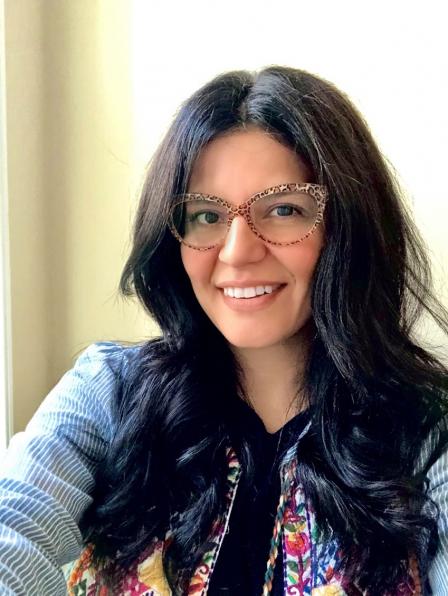 Ozge KaplanOzge Kaplan, Research Environmental Engineer
Ozge KaplanOzge Kaplan, Research Environmental Engineer
How does your work at EPA help protect public health and the environment?
My background is in environmental engineering with a focus on environmental systems. I investigate how energy systems evolve over time and analyze scenarios on how the technological, economic, and behavioral trends impact air quality and greenhouse gas emissions in the future. I develop decision support frameworks at national, regional, state, and city-level that enables policy makers to evaluate cost-effective solutions to reduce emissions from buildings, transportation, and major industries in areas where air quality is an issue. There is a strong linkage on how we produce and use energy and its environmental impacts. Our group’s role is to communicate the risks, sustainability and resilience of the energy system choices to aid sound decision making.
What was your most challenging experience in school or work and how did you overcome it?
I want to highlight couple of challenges I have faced. The first happened while pursing my doctorate. Some of you may know that there is a lot of uncertainty during this learning process. One must realize it is a test of your persistence, endurance, and creativity more than of your intelligence. There were times when I had no idea on what I would be researching. I felt stuck and confused, however I persevered by evaluating multiple research topics and deciding on the one to work on. I am deeply grateful for my mentors at graduate school for their faithful support. Another challenge that I overcame revolves around working with people with diverse backgrounds and biases. Initial encounters definitely pose challenges, but what I learned over time is to be open-minded and be patient in your communications. Every person has something that they can share and teach you, which you might not initially realize, and their perspective can add to the conversation and lead to better teams, projects, and networking opportunities.
Do you have any advice for young people interested in careers like yours?
The foremost thing is to stay focused and pursue opportunities. I grew up in Turkey and during my undergraduate studies, I relied on U.S. EPA’s website for tools and information. Even then, I admired the science at EPA, as well as the amount of resources available to the general public. I always thought it would be ‘out of this world’ to work there, and now here I am, showing that dreams can come true. There are multiple paths that can get you to where you want to go. I advise young people to stay determined and try to find their passion in life. One should keep in mind that it is not always a rosy path, so developing resilience and endurance and having a good support network, whether it is your family, friends, or mentors during tough times, is important.
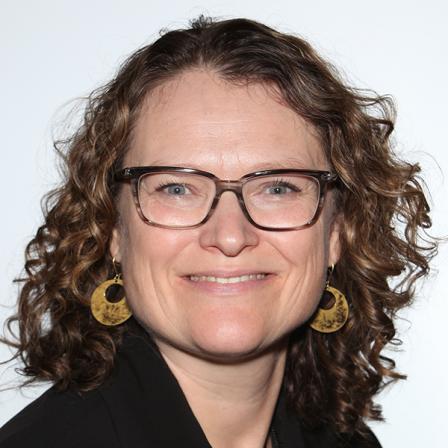 Kacee DeenerKacee Deener, Deputy Director, ORD Office of Science Advisor, Policy and Engagement
Kacee DeenerKacee Deener, Deputy Director, ORD Office of Science Advisor, Policy and Engagement
How does your work at EPA help protect public health and the environment?
My current job is Deputy Director of EPA’s Office of Science Advisor, Policy and Engagement – or OSAPE – in EPA’s Office of Research and Development (ORD). OSAPE works at the intersection of science and decision-making, which makes for interesting, challenging, and fulfilling work. Our vision is to engage with ORD, EPA, and external partners to advance, evaluate, and communicate science that informs impactful decisions to protect public health and the environment today and tomorrow. My office is filled with dedicated public servants who are committed to carrying out this vision, working in different areas of science, partner engagement, programmatic and administrative support, and science communication. I feel so fortunate to work with them and at EPA!
What was your most challenging experience in school or work and how did you overcome it?
I worked as a whitewater raft guide for several summers in high school. Training to be a guide was exhilarating and scary. You learn to “read” the river to make your way downstream safely without flipping your boat, getting stuck on a rock, or having any of your customers fall out. Being responsible for the safety of a raft full of people was intimidating and humbling. I took a chance and I learned to do it. It wasn’t a lucrative summer job (I got paid $12 for a 5-hour raft trip), but the lessons I learned on the river those summers paid huge dividends because they apply to life in general. Try something new, even if it’s scary – you might surprise yourself. Enjoy the thrill of rapids when they come and learn to seek the eddies of calm water when you need a rest. Stay calm and focused when the water is moving fast. Always have a “sweep boat” – someone who has your back – and always have a plan for safety. But most importantly, have fun along the way.
Do you have any advice for young people interested in careers like yours?
- Don’t stress out if you don’t have that “Five Year Plan” that everyone talks about. I’ve never had a detailed one, but I have had some guiding principles that have shaped my career choices. These guiding principles are to seek jobs that: 1) challenge me both professionally and personally; 2) contribute to making a difference for public health; and 3) allow me to learn something new each day.
- Find a great mentor – or even better, find several, because each person brings something different to the table. I like having a combination of mentors who can offer encouragement, vision, sound advice, and a good listening ear.
- Don’t be afraid to try something new. I’ve had the most fulfilling professional experiences when I took a chance and tried something completely different that was outside of my comfort zone and stretched me professionally.
Dr. 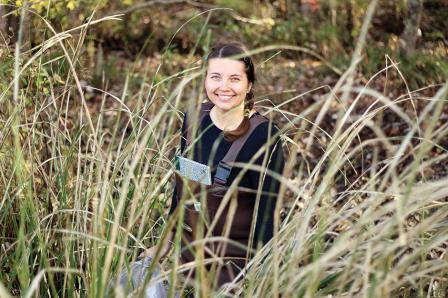 Anna JalowskaAnna M. Jalowska, ORISE Postdoctoral Fellow
Anna JalowskaAnna M. Jalowska, ORISE Postdoctoral Fellow
How does your work at EPA help protect public health and the environment?
I am currently an ORISE (Oak Ridge Institute for Science and Education) postdoctoral fellow studying extreme precipitation events and associated flooding under the mentorship of Tanya Spero. Extreme precipitation can be associated with hurricanes that may last five days or with just a single storm that lasts an hour. Both types of extreme precipitation events can result in flooding. Severe floods associated with extreme precipitation can result in loss of life and property and can cause damage to infrastructure. Additionally, flood water can carry pollutants and pathogens harmful to humans. My research focuses on exploring capabilities of downscaled Global Circulation Models (GCMs) to characterize and quantify changes in extreme precipitation events in the historical past and under future climate scenarios (RCP 4.5 and RCP 8.5). I demonstrated that modeled meteorological data can be used to represent historical and future extreme precipitation events. The results of my research will support stormwater and transportation managers in making decisions about their climate resilience and adaptation plans, to reduce risks associated with future floods.
What was your most challenging experience in school or work and how did you overcome it?
I see work and career challenges as stimulating for my growth. However, life challenges don't always agree with career goals. Juggling life and career stressors can be very challenging and there is no single solution to how to overcome them.
Do you have any advice for young people interested in careers like yours?
Do not be afraid and do not hesitate to start your career in STEM right away. This will give you time to explore and find your true passion. A great way to do that in grades 5-12 is to join and compete in Science Olympiad. In high school, explore programs that would allow you to get the hands-on experience in a laboratory or field research, and don't be afraid to get in touch your role models and ask them questions about their stories. This will give you confidence in college, help you get funding, and get your first job in STEM. Never give up on your dreams!
 Danielle RidleyDanielle Ridley, EPA Embassy Science Fellows Coordinator, ORD Environmental Justice Coordinator
Danielle RidleyDanielle Ridley, EPA Embassy Science Fellows Coordinator, ORD Environmental Justice Coordinator
How does your work at EPA help protect public health and the environment?
My work at EPA as the Embassy Science Fellows Coordinator helps protect public health and the environment here in the U.S. and abroad. Through the Embassy Science Fellows Program, I help place EPA scientists to provide short-term science and technology assistance to Embassies. Embassy Science Fellowship projects range from waste management, air quality management, pollution, STEM, to several other scientific disciplines. During the fellowship, EPA employees gain direct experience in how U.S. embassies operate, how foreign policy is developed and implemented, and how scientific and technical issues intersect foreign policy concerns.
My work as ORD’s Environmental Justice Coordinator helps protect public health and the environment by looking across ORD to identify how we are integrating an environmental justice lens into our research. As the environmental justice coordinator, I work to identify outreach opportunities to share information regarding ORD’s tools and products that can assist communities in their work towards fair treatment and meaningful involvement regardless of race, gender, or socio-economic status with regards to environmental health inequities.
What was your most challenging experience in school or work and how did you overcome it?
My most challenging experience in school was identifying the best way to study. College was completely different from high school in which most subjects came easy to me. I am a hands-on learner so at times reading a book does not allow me to digest information in the most effective way. I overcame this challenge by initiating study groups, going to my TA’s and professor’s office hours, and reading class materials out loud multiple times. I made flash cards, recorded lectures, and asked many questions to confirm that I understood the information.
My biggest challenge at work was not seeing too many people in leadership that look like me. I overcame this challenge by realizing that I could not limit myself based upon that fact. In fact, I learned that I have a responsibility to show other women, that they too can serve in these roles, and instead lead by example.
Do you have any advice for young people interested in careers like yours?
Make your interests known. Ask to schedule informational interviews with people in your interested field. Volunteer, everyone appreciates good volunteers. Volunteering also helps you confirm whether working in a certain field is where your interests truly reside.
General advice for young people: start contributing to your Thrift Savings Plan, or your company’s retirement fund now, like right now. No amount is too small to start, but at a minimum contribute enough to receive your company’s match if it’s offered. This is very important for young women. Women on average make less money than men however, women generally live longer and thus have more expenses. We must start early so that our money has more time to grow.
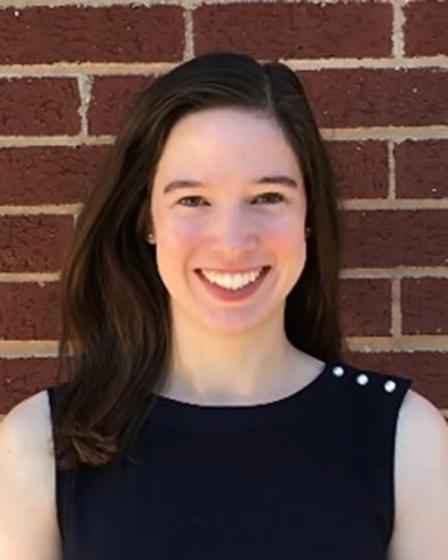 Emma D’AmbroEmma D’Ambro, Post-Doctoral Fellow, Atmospheric Chemist
Emma D’AmbroEmma D’Ambro, Post-Doctoral Fellow, Atmospheric Chemist
How does your work at EPA help protect public health and the environment?
I’m studying air emissions of fluorinated compounds from manufacturing facilities. Many communities across the U.S. are dealing with potential drinking water contamination from fluorinated compounds, although these compounds are currently not regulated because little is known about their health effects. I’m using the EPA-developed Community Multiscale Air Quality (CMAQ) model to investigate the atmospheric fate and transport of fluorinated compounds from production facilities to better understand their geographical extent of impact which will help us understand the impacts on surface waters and potential risk from inhalation.
What was your most challenging experience in school or work and how did you overcome it?
For me, grad school overall was very challenging and I overcame it by working hard and spending a lot of time on it. Only a year out of my degree however, I’ve seen enormous returns on my investment. For example, during my qualifying exam I was really pushed by the professors on my committee to defend my work. I’ve found that while it was stressful in the moment, it’s helped me in public speaking situations since. The job of any scientist is to be skeptical of your own and other’s science, and it’s not uncommon to get tough questions at both internal and external presentations.
Do you have any advice for young people interested in careers like yours?
Consider getting a degree in a “classic” science or engineering field. If you’re interested in environmental science, you can always layer the environmental knowledge over your base knowledge. I have a BS and PhD in Chemistry, although I consider myself an Atmospheric Chemist. Because I had a strong chemistry background, it was much easier to apply that knowledge to the atmosphere than trying to learn organic chemistry on the fly in grad school. Additionally, this makes you more flexible in your job search: I can now apply for any job that is looking for an atmospheric scientist or a chemist.
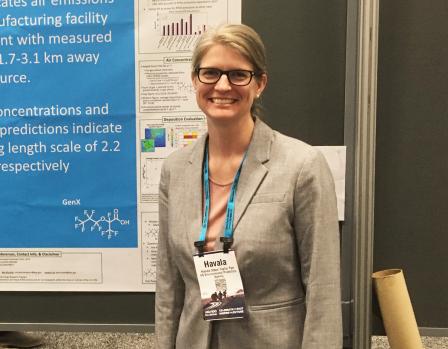 Havala PyeHavala O. T. Pye, Research Scientist
Havala PyeHavala O. T. Pye, Research Scientist
How does your work at EPA help protect public health and the environment?
Most of my work focuses on particles in air. Breathing in particles is known to result in harmful effects on the cardiovascular system and can result in premature death. Understanding sources of particles in air, whether it is direction emission or chemistry, will help us understand how to reduce exposure and improve public health. I code information I develop about sources and sinks of particles in the Community Multiscale Air Quality (CMAQ) Model, which is publicly distributed by EPA and allows policymakers to link emission control scenarios to particle concentration endpoints.
What was your most challenging experience in school or work and how did you overcome it?
I am both motivated and challenged by the idea of producing high quality scientific products. The deliverable for most of my projects is a peer-reviewed paper in a scientific journal. I get a lot of satisfaction from completing these manuscripts, but the process for creating them is often long and challenging. Most papers in which I lead authorship take two years from idea to final publication. Breaking the project into goals on a weekly basis with action items for each day helps me stay focused and progressing towards the end goal.
Do you have any advice for young people interested in careers like yours?
Science and engineering offer many career opportunities. I encourage students to use formal classes to advance their understanding of fundamental math and science topics. The application of that knowledge to something that interests you can occur via projects or elective classes. If you find someone working on something you might be interested in, ask them about their career path. I didn't even know that you could get a doctorate in chemical engineering with just computational studies until I was actually visiting graduate schools.
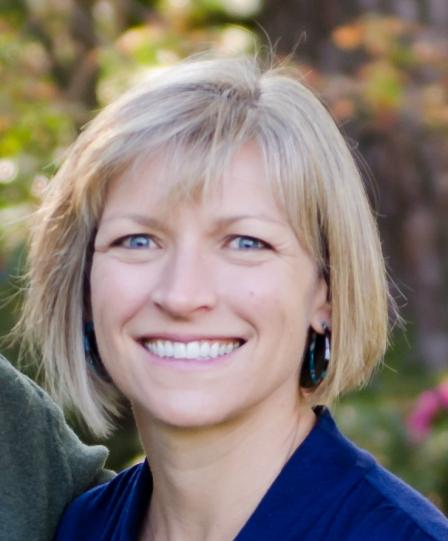 Kristen FoleyKristen Foley, Research Statistician
Kristen FoleyKristen Foley, Research Statistician
How does your work at EPA help protect public health and the environment?
I work with the team that develops the Community Multiscale Air Quality – or “CMAQ” – modeling system. Within the agency, CMAQ has been used by EPA’s program offices in multiple policy and risk assessments. Outside of the agency, researchers around the world use CMAQ estimates of ozone, particulate matter, air toxics, and acid deposition to understand the linkages between these pollutants and different health and environmental outcomes. As a statistician, I'm part of the model evaluation group which is tasked with comparing model output to observational data to demonstrate the appropriateness of using the model for regulatory applications. Continued development and evaluation of CMAQ ensures that model simulations used to inform policy decisions are scientifically and technically sound.
What was your most challenging experience in school or work and how did you overcome it?
There are relatively few statisticians in my organization and across EPA. The advantage of this is that there are many opportunities to contribute to interesting and meaningful projects.The challenge can be staying plugged in to the wider statistical community. Last year, with the encouragement of a fellow EPA statistician, I joined the executive board of the NC Chapter of the American Statistical Association.This has been a great experience and I have enjoyed ‘talking shop’ with local statisticians across the triangle and helping organize events to keep the community connected and informed.
Do you have any advice for young people interested in careers like yours?
In graduate school I once saw a statistician from the EPA give a talk to my statistics department and I thought, “Wow, that sounds like a fun job.” The speaker would later be my technical mentor when I first joined EPA as a post doc. I encourage students that are interested in working for a particular organization to reach out to someone in that role for an informational interview. Since it is not a job interview, there is much less pressure on both sides, and it is easier to have an honest conversation about pros and cons of different career paths. Find out what their day-to-day job is like, how much freedom they have to shape their work and their role, what their favorite and least favorite part of their job is, what classes they wish they had taken in school, etc.
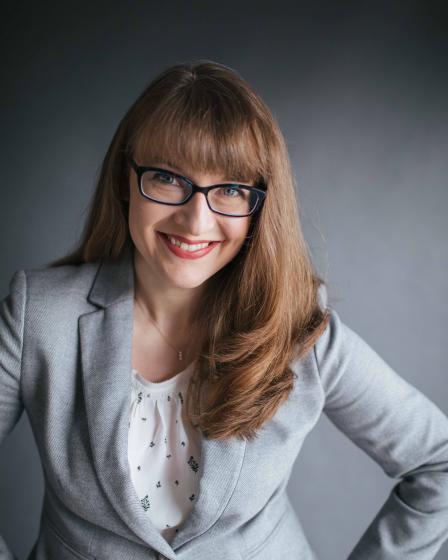 Katie Paul FriedmanKatie Paul Friedman, Computational Toxicologist
Katie Paul FriedmanKatie Paul Friedman, Computational Toxicologist
How does your work at EPA help protect public health and the environment?
The objective of my work is to use in vitro screening and in silico models for hazard and exposure to efficiently evaluate chemical safety and prioritize chemicals for further examination; in brief, we are trying to change the risk assessment paradigm to include human-relevant and rapid technologies to enable targeted research and data-driven chemical assessment. This helps protect public health by providing predictions of human health hazard and exposure for many more chemicals than would be possible using traditional animal approaches to toxicology.
What was your most challenging experience in school or work and how did you overcome it?
Uncertainty in available opportunities and lack of applied toxicology research funding really challenged me as I proceeded through early career decisions. My guiding principle was seeking out work and positions that allowed me to stay close to the science and changes in the field that were interesting to me, mainly to revolutionize toxicology with 21st century approaches, even if the career jump seemed like a shift from my ultimate professional goals. Accepting that a career can be non-linear, and that each career jump provides immense opportunity for growth, is a critical aspect of staying in the sciences amidst the many challenges and external pressures.
Do you have any advice for young people interested in careers like yours?
My advice for people interested in a career like mine would be to not only embrace being multi-faceted as a researcher, but also to accept help and recognize the value of the expertise of others. Seek deep expertise in a strength area, whether it is biology, statistics and statistical programming, or data science, but also keep learning even a little bit about other areas so that you can recognize and understand good ideas from experts in those fields. It’s old advice, but good advice: read the literature! Finally, I’d suggest that the future requires everyone to be digitally literate and have some ability to use at least one programming language to manage and interpret data for all other users.
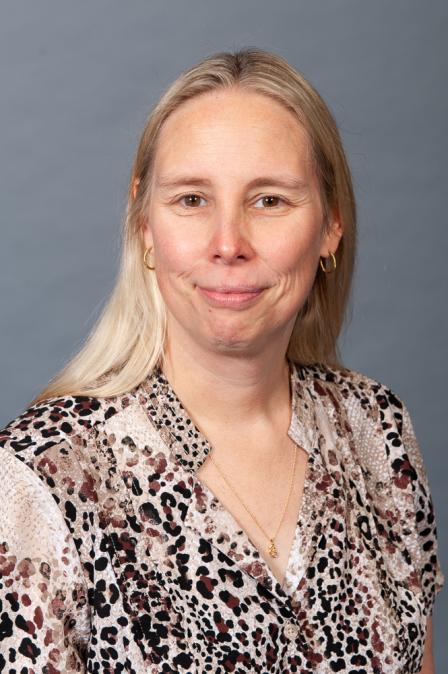 Elin UlrichElin Ulrich, Acting Branch Chief and Research Chemist, Center for Computational Toxicology and Exposure
Elin UlrichElin Ulrich, Acting Branch Chief and Research Chemist, Center for Computational Toxicology and Exposure
How does your work at EPA help protect public health and the environment?
My research is focused on understanding what chemicals people and the environment are exposed to. We use non-targeted analysis to answer the question “What chemicals are in this sample?” and samples can range from the air we all breathe; water in lakes, rivers, streams, and from your faucets; products used in homes and personally; and so many more. Non-targeted analysis looks at more chemicals than traditional experiments and can provide exposure information more rapidly because of the broader chemical space covered. Once we understand chemical exposures, that can be partnered with chemical toxicity information to understand what the risk is. Identifying “bad actors” is the first step in limiting risk, improving health, and cleaning up the environment.
What was your most challenging experience in school or work and how did you overcome it?
I find it difficult to determine when a project is not working out and deciding to pull the plug. Scientists are naturally curious, and I’m notoriously wondering what would happen if I tweaked this parameter or ran an experiment again. It’s easy to ask new scientific questions and keep a project going. I’ve had wonderful mentors who have guided me towards wrapping things up, getting results published, and moving on. As my career has progressed, I’ve gotten better at prioritizing and realizing when my own scientific curiosity just isn’t worth the time required. It’s something that for me just takes practice. I don’t always get it right and try to learn from others and my mistakes.
Do you have any advice for young people interested in careers like yours?
My education and career path have been pretty straight, but I think that is becoming more and more unusual. I received a bachelor’s degree in chemistry from Augustana College. I completed a PhD in analytical chemistry and environmental science at Indiana University. My postdoctoral work was more chemistry at the US Geological Survey, and I’ve been employed at EPA as a research chemist since 2002. It’s ok to change your mind about what you want to be when you grow up, and to change careers periodically. As long as you wind up doing something you love, it doesn’t matter how you got there!
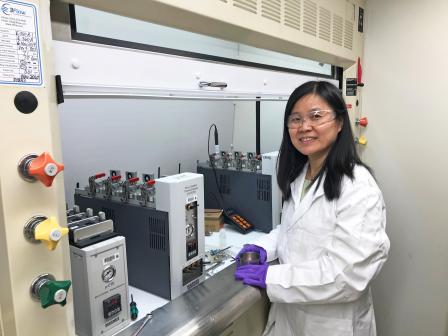 Xiaoyu LiuXiaoyu Liu, Physical Scientist
Xiaoyu LiuXiaoyu Liu, Physical Scientist
How does your work at EPA help protect public health and the environment?
As a physical scientist at EPA, I conduct research to improve the methods and techniques to measure and simulate emissions, fate and transport of indoor air chemical contaminants in various buildings, e.g. schools, office buildings, and residences. My research identifies and characterizes sources of indoor air pollution, such as formaldehyde, per- and polyfluoroalkyl substances (PFAS), polychlorinated biphenyls (PCBs), flame retardants, etc., and evaluates risk management options to improve indoor environment quality. My work informs policy decisions to minimize exposures and protect human health and helps to develop environmentally sustainable approaches for the environment.
What was your most challenging experience in school or work and how did you overcome it?
I was appointed as the D22.05 (Indoor Air) subcommittee chair of ASTM D22 Air Quality committee in 2016. Our subcommittee has over 200 national and international members. At first, I was not sure if I would be competent for this position. I was especially challenged at the first committee meeting when I had to organize the whole day subcommittee meeting, report to the main committee, and participate in executive activities. To overcome this, I spent quite bit time preparing for it. I even did a rehearsal by myself. It turned out my first meeting was a success and I can easily handle it since then. This challenging experience boosted my self-confidence and enhanced my professional development. I’m glad I accepted it.
Do you have any advice for young people interested in careers like yours?
My advice for young people interested in environmental research would be to show your motivation in the work that you are doing. If you are motivated, you will work hard to solve the problem, no matter what it is. The outcome will bring you more opportunities for your future professional career.
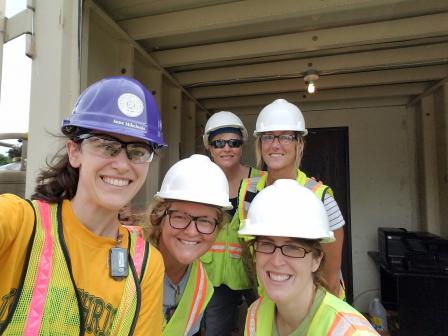 Anne MikelonisAnne Mikelonis, Environmental Engineer
Anne MikelonisAnne Mikelonis, Environmental Engineer
How does your work at EPA help protect public health and the environment?
My research seeks to understand how stormwater facilitates the transport of hazardous materials in the environment (i.e., biothreat agents such as the spores that cause anthrax and radionuclides). I work on studies aimed at helping the drinking water and stormwater community prepare and respond to low probability, but high consequence “black swan” type scenarios. We are building a knowledge base for emergency responders with modeling resources that are coupled with laboratory and field validation of transport mechanisms for these hazardous materials.
What was your most challenging experience in school or work and how did you overcome it?
Lack of confidence was a persistent problem for me while going through engineering classes. Over-studying, great friend and family support, and finding space for outside hobbies helped keep me sane and prove to myself I could hang with “human calculator” type classmates.
Do you have any advice for young people interested in careers like yours?
Define areas you are passionate about but stay flexible. By raising your hand to work on projects outside of your academic background or career vision, your work will stay exciting and fresh. You will also bring new perspectives to the project. Finally, ask as many people as you can to do informational interviews. You will learn a lot about what options are out there, and when the time comes to look for a job, it won’t be your first time interacting with them.
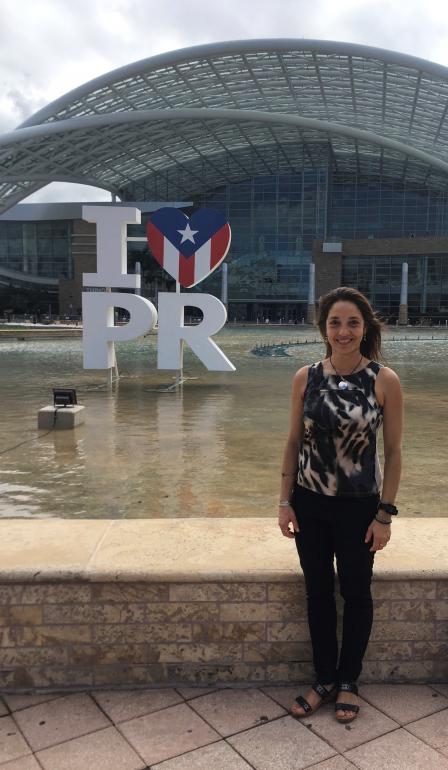 Marirosa MolinaMarirosa Molina, Research Microbiologist
Marirosa MolinaMarirosa Molina, Research Microbiologist
How does your work at EPA help protect public health and the environment?
My research focuses on understanding human exposure to waterborne pathogens (bacteria and viruses) in surface waters. This work is important because it informs the public about potential health risks associated with recreational and drinking water sources impacted by microbial contaminants. By monitoring the presence, quantity and transport of fecal indicator bacteria, microbial source tracking markers and pathogens, we can determine the source of the contamination and the level of risk associated with our water resources. This helps ensure that these resources can be properly managed and protected for the use and enjoyment of future generations.
What was your most challenging experience in school or work and how did you overcome it?
The most challenging experience at work has been by far balancing a busy research program where students, and ORISE fellows depend on you with being a mom of three very active individuals. Keeping the pace at work while keeping myself engaged in my children’s activities and daily happenings has not been an easy task, especially when they were really young. I think a key aspect was to make my children very aware of the type of work that I do, show them my workspace and lab when they were old enough, and share with them aspects of my research that they seem interested in. By the same token, at work, I tried my best to create good communication dynamics among my research staff and tried to empower them to become the researchers they strive to be. I trusted the process, and do not regret it, as I have been blessed with great research teams and three wonderful children.
Do you have any advice for young people interested in careers like yours?
Yes, absolutely! I would tell the next generation of scientists to trust in your capabilities and don’t isolate yourself. Believe in your strength and creativity to achieve the next great contribution. Keep alternatives and doors open and believe in the power of a global community of scientists where everybody can play an important role (big or small) for the betterment of society.
Editor's Note: The opinions expressed herein are those of the employees alone. EPA does not endorse the opinions or positions expressed.
